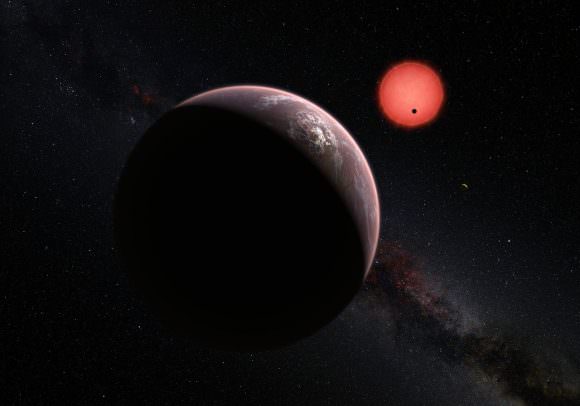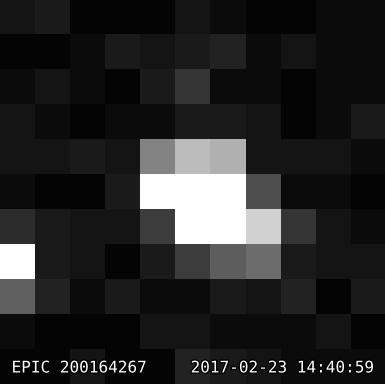On February 22nd, 2017, NASA announced the discovery of a seven-planet system around the red dwarf star known as TRAPPIST-1. Since that time, a number of interesting revelations have been made. For starters, the Search for Extra-Terrestrial Intelligence (SETI) recently announced that it was already monitoring this system for signs of advanced life (sadly, the results were not encouraging).
In their latest news release about this nearby star system, NASA announced the release of the first images taken of this system by the Kepler mission. As humanity's premier planet-hunting mission, Kepler has been observing this system since December 2016, a few months after the existence of the first three of its exoplanets were announced.
These observations took place between December 15th, 2016 and March 4th, 2017, as part of Kepler's extended mission (known as K2). During this 74-day period, K2 collected data on minuscule changes in the star's brightness, which were caused by transits made by the star's exoplanets. And as of Wednesday, March. 8th, this information is now available to the scientific community.

Artist's impression of of the exoplanets orbiting the ultracool dwarf star TRAPPIST-1. Credit: ESO/M. Kornmesser/N. Risinger (skysurvey.org).
These observations constituted the longest continuous set of observations of the star system to date. But in truth, the initial coordinates designated for this observation (known as Campaign 12) were set back in Oct. 2015, and did not focus on TRAPPIST-1. But as of May 2016, when the system's first three planets were announced, the science teams adjusted their focus to observe them.
As Michael Haas, the science office director for the Kepler and K2 missions at NASA's Ames Research Center, explained:
"We were lucky that the K2 mission was able to observe TRAPPIST-1. The observing field for Campaign 12 was set when the discovery of the first planets orbiting TRAPPIST-1 was announced, and the science community had already submitted proposals for specific targets of interest in that field. The unexpected opportunity to further study the TRAPPIST-1 system was quickly reconized and the agility of the K2 team and science community prevailed once again."
While the data is raw and uncalibrated, it is expected to help astronomers learn more about this system of planets. In particular, it could help astronomers to place constraints on the seventh planet's orbital period and mass (which are currently unknown). Additional information about the other six planets, particularly their size and mass, could also help astronomers make more accurate assessments about their composition.

Raw data from the K2 Category 12 survey. Credit: NASA/Kepler/K2 Campaign12
The magnetic activity of the host star, which is important in determining if any of its planets could be habitable, is also something that astronomers would like to learn more about. Last, but not least, the new data will help astronomers to prepare proposals for the use Earth-based telescopes next winter to further investigate TRAPPIST-1.
These proposals are due this month, and the timely arrival of this data ought to help research teams to refine their research objectives for next year. Any refinements made using this data will also help astronomer plan for follow-up studies using next-generations telescopes like the James Webb Space Telescope. As Geert Barentsen, a K2 research scientist at NASA's Ames Research Center, explained:
"Scientists and enthusiasts around the world are invested in learning everything they can about these Earth-size worlds. Providing the K2 raw data as quickly as possible was a priority to give investigators an early look so they could best define their follow-up research plans. We're thrilled that this will also allow the public to witness the process of discovery.
By the end of May 2017, the data will be fully processed and calibrated, which will also be made available to the public. As you can see from the images above, it was a little on the pixelated side! Still, we can expect some interesting finds to come out of this crowded star system in the coming months. Hopefully, some of that information will help us to determine if there's any real chance of life forming there.
Further Reading: NASA, Kepler and K2
No comments:
Post a Comment